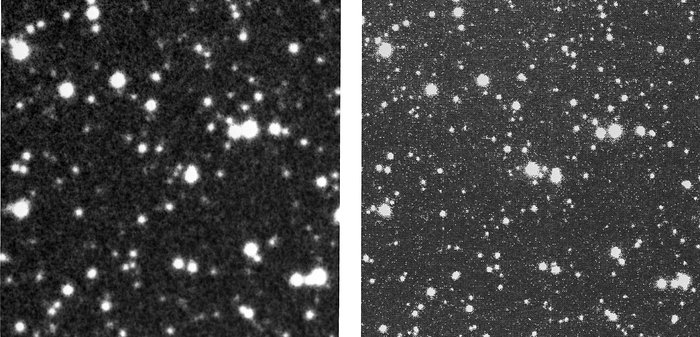Nova Muscae 1991
The new star, which is now referred to as Nova Muscae 1991, was first detected by the WATCH all-sky X-ray camera, an instrument built by the Danish Space Research Institute (Lyngby, Denmark) in collaboration with the Space Research Institute (Moscow) and installed on the Soviet GRANAT satellite which was launched in December 1989. Monitoring the stream of WATCH data on January 10, Søren Brandt, a Danish scientist at the GRANAT ground station in Crimea (USSR) noted the sudden emergence on the previous day of a new source of X-ray emission in the southern sky. This new X-ray source was unusually strong, in fact the second strongest in the sky at that moment and about twice as intense as the famous X-ray emitting Crab Nebula (the remnant of a star that exploded in the year 1054).
Crédit:ESO
À propos de l'image
| Identification: | eso9101a |
| Type: | Collage |
| Date de publication: | 17 janvier 1991 |
| Communiqués de presse en rapport: | eso9101 |
| Taille: | 2448 x 1177 px |
À propos de l'objet
| Nom: | Nova Muscae 1991 |
| Type: | Local Universe : Star : Type : Exotic : X-Ray Binary |
| Distance: | 18000 années lumière |
| Catégorie: | Stars |
